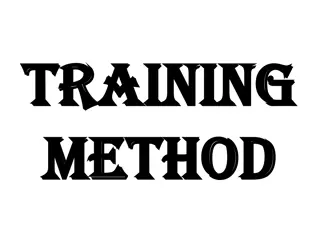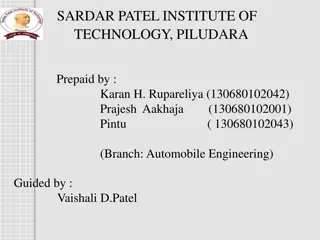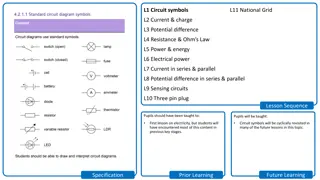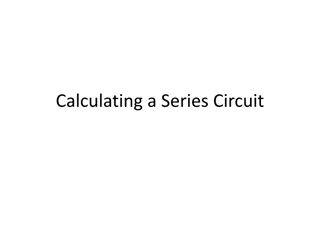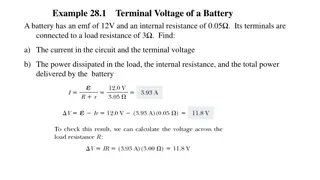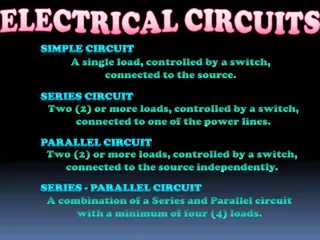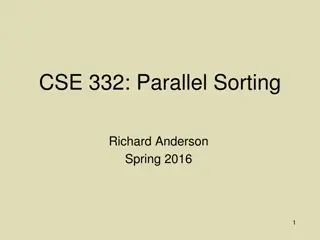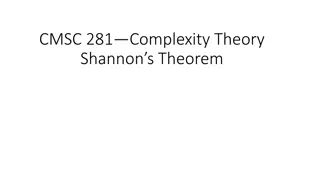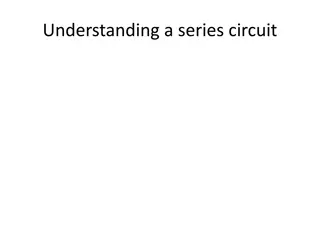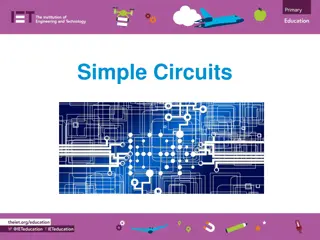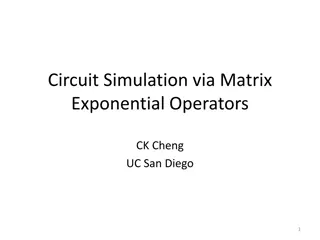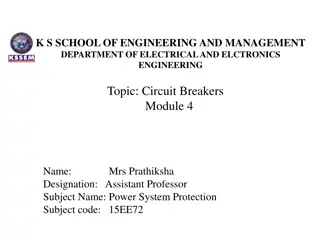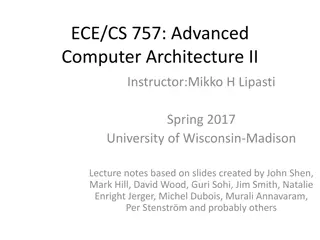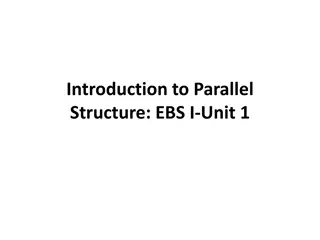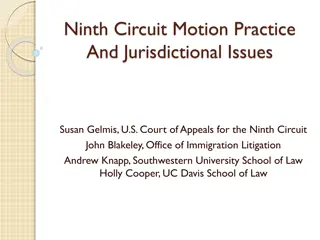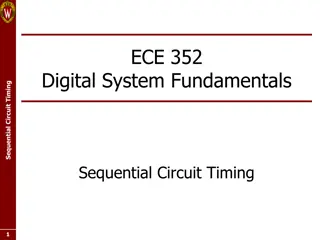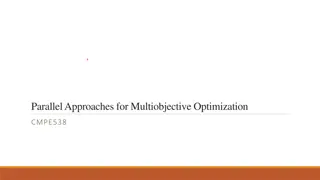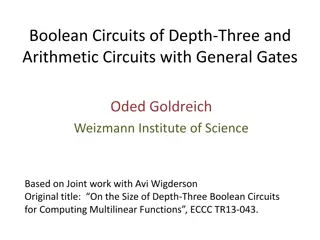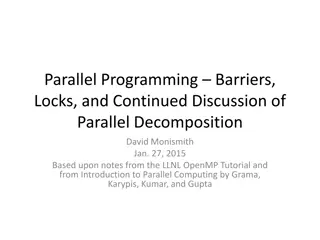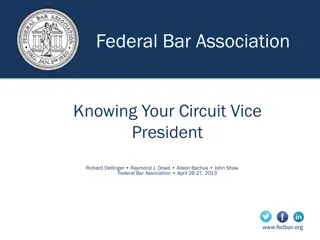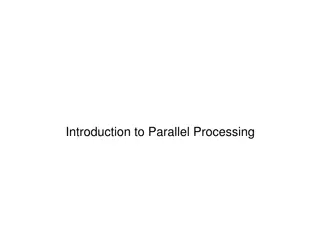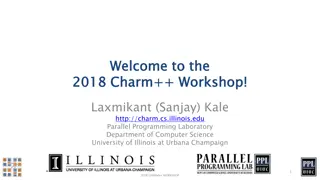Understanding 4-Bit Parallel Adder/Subtractor IC7483
Explore the concept of 4-bit parallel adder/subtractor using IC7483, which is a digital circuit capable of performing arithmetic operations on binary numbers greater than one bit in length. Learn about the structure, operation, and implementation of parallel adders with cascaded full adders. Discove
8 views • 11 slides
Designing a 5V DC Power Supply Using IC 7805: Step-by-Step Guide
Design a 5V DC power supply using IC 7805 by selecting a regulator IC, transformer, diodes for the bridge, smoothing capacitor, and ensuring safety. The circuit includes an input transformer, rectifier circuit, filter, and regulator. Understand the importance of each component in the design process
5 views • 20 slides
Power System Fault Calculation and Protection Analysis
In this technical document, we delve into the calculation of fault current and fault apparent power in symmetrical three-phase short circuit scenarios within power systems. Through detailed equivalent circuit diagrams, reactance calculations, and per unit value derivations, the fault current and app
5 views • 15 slides
Adventurous 8-Day Spiti Circuit Biking Journey
Embark on an exhilarating Spiti circuit biking trip from Delhi! Join WanderOn's Spiti Valley Biking Expedition for 2024 and immerse yourself in the ultimate riding experience through stunning landscapes. To learn more , visit https:\/\/wanderon.in\/trip\/spiti-circuit-biking
4 views • 1 slides
Circuit Training Methods: A Comprehensive Guide
Circuit training is a versatile workout method that combines various exercises to target strength, endurance, and overall fitness. Developed in 1953, it offers a time-efficient way to enhance multiple fitness components simultaneously. This article explores popular circuit training methods, advantag
2 views • 24 slides
Inside the Circuitry of the Casio CTK-450 Electronic Keyboard
Detailed insights into the internal components of the Casio CTK-450 electronic keyboard, covering the power supply, CPU functionality, keyboard matrix circuit, filter block, and mute circuit. Explore how each element contributes to the overall functioning of the keyboard, from processing key presses
0 views • 11 slides
Understanding Miniature Circuit Breakers (MCB) in Automobile Engineering
Learn about Miniature Circuit Breakers (MCB) used in Automobile Engineering, including their principle of operation, construction, and application. MCBs serve as efficient replacements for traditional fuses, providing overload and short circuit protection through thermal and magnetic mechanisms. The
0 views • 15 slides
Exploring the Impact of Salt Quantity on Saltwater Circuit Current
A saltwater circuit utilizes saltwater as a key element for conducting electricity. This unique circuit involves the dissolution of salt into sodium and chloride ions, which, when exposed to an electric voltage, allows for the flow of electricity. The quantity of salt present in the circuit directly
0 views • 9 slides
Understanding Parallel and Distributed Computing Systems
In parallel computing, processing elements collaborate to solve problems, while distributed systems appear as a single coherent system to users, made up of independent computers. Contemporary computing systems like mobile devices, IoT devices, and high-end gaming computers incorporate parallel and d
1 views • 11 slides
Understanding Electricity: Circuit Symbols and Components
Explore the fundamentals of electricity with a focus on circuit symbols, components, series, and parallel circuits. Delve into the difference between complete and incomplete circuits, and discover the importance of using circuit diagrams to depict electrical setups accurately.
0 views • 18 slides
Comprehensive Guide to Electric Circuits and Circuit Diagram Interpretation
Explore the fundamentals of electric circuits, circuit components, and diagram interpretation. Learn about series and parallel circuits, resistors, sources, switches, transducers, and more. Discover how to calculate resistance, current, and potential difference in circuits. Gain insights into diodes
2 views • 76 slides
Understanding Parallel and Distributed Systems in Computing
A parallel computer is a collection of processing elements that collaborate to solve problems, while a distributed system comprises independent computers appearing as a single system. Contemporary computing systems, like mobile devices and cloud platforms, utilize parallel and distributed architectu
0 views • 11 slides
Understanding Electrical Circuits: Basics and Types
The presentation covers the basics of electrical circuits, explaining the concept of electric current, the role of cells and batteries, simple circuit components like switches and lamps, and circuit diagrams. It further delves into types of circuits - series circuits and parallel circuits, detailing
0 views • 24 slides
Understanding Series Circuit Calculations for Voltage, Current, and Power
Exploring the calculations in a series circuit to determine voltage, current, power, and total resistance. Learn the formulas and steps to find these values, emphasizing the relationship between resistance, current, and voltage drops in the circuit.
0 views • 12 slides
Preparing for Oral Argument in the Eleventh Circuit: Essential Tips
Understand the process of oral arguments in the Eleventh Circuit, including when to request oral argument, FRAP 34 guidelines, and how to handle the notice of oral argument. Get insights on making the most of oral argument opportunities and potentially shaping circuit law.
0 views • 32 slides
Electrical Circuit Analysis Examples and Solutions
Explore various examples of electrical circuit analysis involving batteries, resistors, and parallel connections. Learn how to calculate current, voltage, power dissipation, and equivalent resistance in different circuit configurations. Detailed solutions provided for better understanding.
0 views • 12 slides
Understanding Electrical Circuits: Basics and Wiring Diagrams
Explore different types of electrical circuits including simple circuit, series circuit, parallel circuit, and combination circuits. Learn about loads, switches, and connections to power sources. Dive into wiring diagrams for practical applications and visual understanding.
0 views • 8 slides
Transistor Tuned Amplifiers: Operation and Analysis
Transistor tuned amplifiers consist of a parallel tuned circuit as the collector load, amplifying a specific frequency while rejecting others. The resonant frequency of the tuned circuit is crucial for amplification. A high Q circuit offers maximum voltage gain at the resonant frequency but decrease
0 views • 30 slides
Understanding Shift Registers: Introduction and Classification
Explore the world of shift registers, including buffer registers, and different modes of operation like serial in/serial out, serial in/parallel out, parallel in/serial out, and parallel in/parallel out. Learn about the construction, operation, and classification of registers in digital systems.
1 views • 24 slides
Understanding Shift Registers in Sequential Logic Circuits
Shift registers are sequential logic circuits used for storing digital data. They consist of interconnected flip-flops that shift data in a controlled manner. This article explores different types of shift registers such as Serial In - Serial Out, Serial In - Parallel Out, Parallel In - Serial Out,
2 views • 9 slides
Understanding Electronic Components in Circuits
An electrical circuit converts energy while an electronic circuit processes information. Electronic components like buzzer, diode, LED, and LDR play essential roles in circuit operations. Learn about the functions and symbols of these components, including forward and reverse bias in diodes.
1 views • 14 slides
Understanding Parallel Circuits in Electronics
Explore topics such as resistors in parallel, voltage distribution, Kirchhoff's current law, resistance calculations, and practical applications in parallel circuits. Dive into problem-solving exercises and grasp concepts like current dividers, total resistance calculations, and power distribution i
0 views • 20 slides
Understanding Parallel Sorting Algorithms and Amdahl's Law
Exploring the concepts of parallel sorting algorithms, analyzing parallel programs, divide and conquer algorithms, parallel speed-up, estimating running time on multiple processors, and understanding Amdahl's Law in parallel computing. The content covers key measures of run-time, divide and conquer
1 views • 40 slides
Exploring Circuit Size Bounds in Complexity Theory
The article delves into Shannon's Theorem in Complexity Theory, discussing the upper bounds of circuit sizes for Boolean functions of n variables. It explores the 1-1 correspondence with 0-1 strings of length 2n and how Boolean functions can be expressed as CNF or DNF formulas. The computation of th
2 views • 19 slides
Understanding a Series Circuit: Exploring Potential Difference, Current, and Resistance
Dive into the concept of a series circuit by visualizing it as a circular road with cars representing electrical charge flow. Learn about potential difference, current, energy transfer, and resistance in the circuit through relatable analogies and illustrations. Understand how a break in the loop or
0 views • 48 slides
Creating a Simple Circuit with Motor, Battery, and Switch
This guide illustrates how to assemble a simple electrical circuit using a motor, battery pack, switch, wires, and a homemade paper clip switch. Learn the steps involved in preparing and joining wires, making a switch from a paper clip, and assembling the components to complete the circuit. Follow a
0 views • 7 slides
Advanced Circuit Simulation Using Matrix Exponential Operators
Explore the innovative approach of circuit simulation via matrix exponential operators as proposed by CK Cheng from UC San Diego. The method involves utilizing general matrix exponentials, Krylov spaces, Arnoldi orthonormalization, and inverting Krylov subspaces for accurate simulations. These techn
0 views • 28 slides
Comprehensive Overview of Circuit Breakers in Power System Protection
Circuit breakers play a critical role in protecting electrical circuits from damage caused by excess current. This informative module covers topics like fault clearing time, arc voltage, arc interruption methods, and types of circuit breakers. Through detailed explanations and images, readers can un
0 views • 20 slides
Parallel Programming Directives and Concepts
Learn about parallel programming directives like Diretiva.parallel and #pragma omp.parallel, which allow code to be executed by multiple threads simultaneously. Explore concepts such as defining parallel regions, setting the number of threads, and utilizing OpenMP directives for parallel for loops.
0 views • 39 slides
Understanding Parallel Software in Advanced Computer Architecture II
Exploring the challenges of parallel software, the lecture delves into identifying and expressing parallelism, utilizing parallel hardware effectively, and debugging parallel algorithms. It discusses functional parallelism, automatic extraction of parallelism, and finding parallelism in various appl
0 views • 86 slides
Mastering Parallel Structure in Business Communication
Understanding and implementing parallel structure in business communication is essential for clear, effective, and professional writing. Explore the nuances of parallelism, such as using correlative conjunctions like "not only...but also," to ensure consistency and coherence in your written work. Le
0 views • 21 slides
Ninth Circuit Motion Practice and Jurisdictional Issues Summary
This text provides valuable information on Ninth Circuit motion practice and jurisdictional issues, focusing on topics such as petitions for review, tips for petitioning for review, motion for stay of removal, and related legal standards and procedures. It emphasizes the importance of timely filing,
0 views • 31 slides
Design of Multi-Level Gate Circuits Using NAND and NOR Gates
Explore the design and analysis of multi-level gate circuits using NAND and NOR gates, including two-level and multiple-output circuit design. Learn about circuit conversion, alternative gate symbols, AND-OR, OR-AND configurations, and factorization of multi-level gate circuits. Dive into examples a
0 views • 28 slides
Understanding Sequential Circuit Timing and Clock Frequency
Sequential circuit timing is crucial for designing digital systems. The minimum clock period, slack values, clock frequency, and critical paths play key roles in determining the operational speed and performance of sequential circuits. By analyzing flip-flop timing parameters, combinatorial logic de
0 views • 20 slides
Parallel Approaches for Multiobjective Optimization in CMPE538
This lecture provides a comprehensive overview of parallel approaches for multiobjective optimization in CMPE538. It discusses the design and implementation aspects of algorithms on various parallel and distributed architectures. Multiobjective optimization problems, often NP-hard and time-consuming
0 views • 20 slides
Depth-Three Boolean Circuits and Arithmetic Circuits: A Study on Circuit Complexity
Explore the intricacies of depth-three Boolean circuits and arithmetic circuits with general gates, focusing on the size, structure, and complexity measures. The research delves into the relationship between circuit depth, gate types, and multi-linear functions, offering insights into circuit models
0 views • 12 slides
Understanding OpenMP Barriers and Locks in Parallel Programming
Exploring the concepts of OpenMP barriers and locks in parallel programming, this discussion covers the importance of synchronization through barriers, the use of lock variables for finer control over synchronization, and examples like the Dining Philosophers problem. Learn how these primitives faci
0 views • 22 slides
Federal Bar Association Circuit Vice Presidents: Roles and Responsibilities
Circuit Vice Presidents play a vital role within the Federal Bar Association, serving as a crucial link between national leadership and chapter leaders. Elected for 2-year terms and responsible for staying in contact with chapters within their circuits, Circuit Vice Presidents have duties that inclu
0 views • 20 slides
Understanding Parallel Processing Fundamentals
This overview delves into the basics of parallel computing, covering parallel memory architectures, programming models, design issues, and parallelizing serial programs. Parallel computing involves leveraging multiple compute resources simultaneously to enhance computational efficiency and solve pro
0 views • 35 slides
Introduction to Charm++ Programming Framework
Charm++ is a generalized approach to parallel programming that offers an alternative to traditional parallel programming languages like MPI, UPC, and GA. It emphasizes overdecomposition, migratability, and asynchrony to enhance parallel program performance and efficiency. The framework uses indexed
0 views • 43 slides




